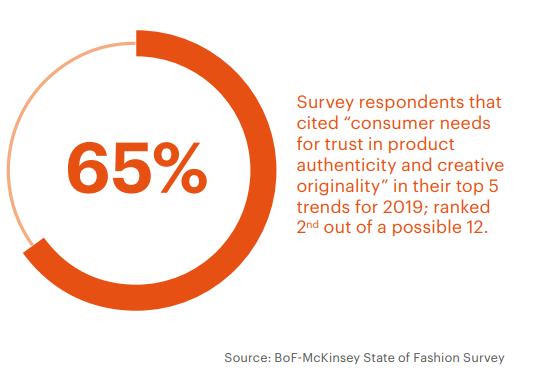Back again with part 2 of What you need to know: McKinsey & BOF The State of Fashion 2019. Didn’t read part one? Check it out here! This series highlights the top trends in fashion for 2019 as identified by Business of Fashion and McKinsey & Company in their yearly State of Fashion report. The report is about 100 pages long, so I did all the legwork and packaged up the top trends for you. The report outlines 4 major trends for consumer shifts in 2019. Check them out below!
-
End of Ownership
The fashion trend cycle is faster than ever and the price of luxury goods is ever increasing, making keeping up impossible. People want new-ness and are looking to new models of consuming to get it: resale & rental.
→ What does this mean for fashion? Young consumers crave newness yet also value sustainability. This is going to cause a shift in fashions consumer model towards renting and resale. This can already be seen with the success of platforms like Rent the Runway. BOF & McKinsey predict that the resale market could be bigger than fast fashion in the next 10 years. Identifying the difference between products consumer want to rent/buy at resale vs. buy new will be key for the success of all players in the industry
-
Getting Woke
Young consumers are watching brands every move. They want to see their values reflected in the brands they consume and are not afraid to be critical when they feel something is wrong.
→ What does this mean for fashion? This really shows that fashion has become so much more than clothing. The brands you wear can reflect the causes or the politics you align with (Checkout The Pussyhat Project!). It is more important than ever for brands to be open with their customers about who they are and what they stand for. It is also imperative that brands think critically about what they are selling and their advertising, as one small miss-step can lead to massive uproar and even boycotting (Ex. Gucci Balaclava).
-
Now or Never
Thanks to companies like Amazon and Uber, customers expect the time between wanting something and getting something to be faster than ever. This expectation will definitely trickle down into the fashion market.
→ What does this mean for fashion? This means that brands need to position purchase opportunities that match up with when a potential customer is converted. The problem is that customers are now converted on social media platforms, far from where a brand can create opportunity to purchase. Brands need to work to position themselves in a way that is integrated with the digital customer journey.
-
Radical Transparency
Whether its their information security or questions about how and where a garment is made- customers want to know the truth.
→ What does this mean for fashion? Well, if customer want to know where their clothing is coming from, that means brands will have to tell them. This is new and uncharted territory for fashion, which has always acted as a black box. The problem is, many brands contract their work to factories overseas and do not have all the information customers want. To meet radical transparency demands brands will have to spend time and money auditing their manufacturing practices and share this information publicly.

BoF McKinsey State of Fashion Survey
Want to read more about these trends? Check out the full report here. Stay tuned for part 3 of this series to see BOF and McKinsey & Company’s forecast of fashion system changes in 2019.






